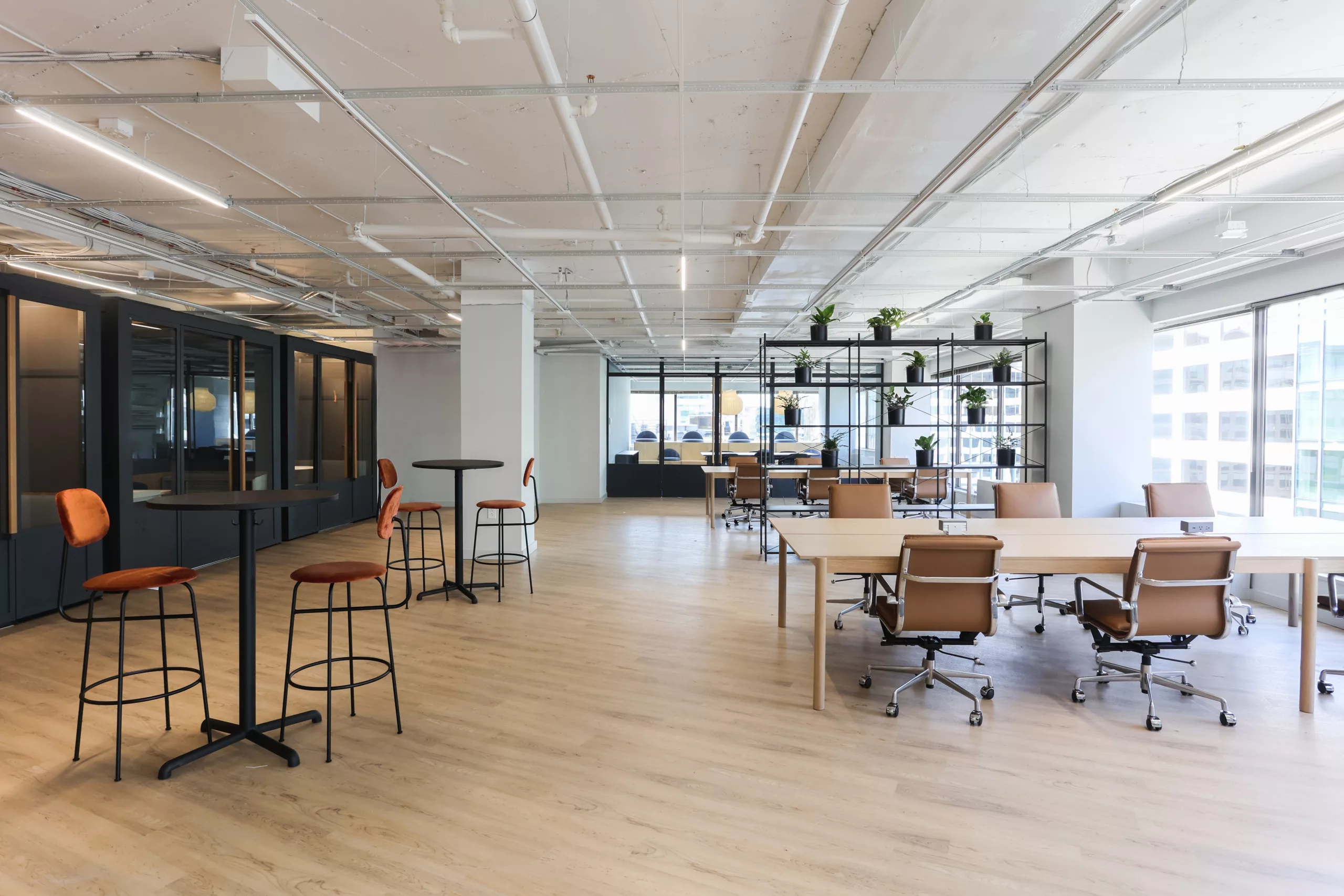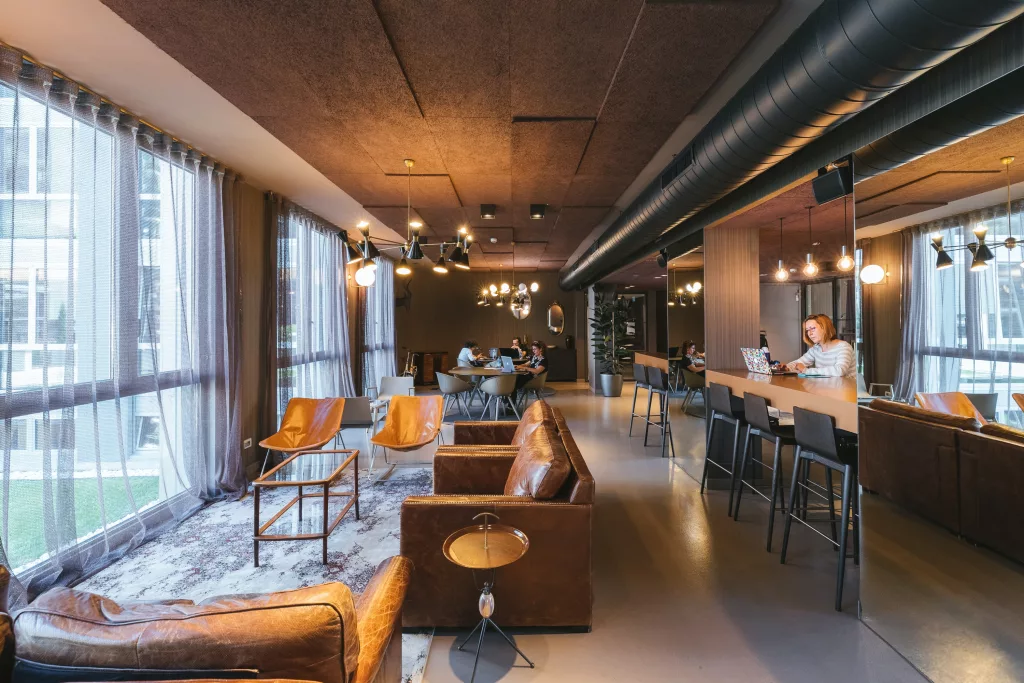Landlords, facing unprecedented vacancies, are rolling out the incentives to employers ready to sign leases for office space. Free rent and pre-built office suites, anyone?
Five years ago, if you wanted a great New York City office space, you might offer the landlord a signing bonus and pay as much as $80 per square foot. Today, the landlord is the one doing the wooing—offering an incredible amount of incentives, such as shorter, flexible leases, free rent, tenant improvement allowances, newly built amenities and pre-built spaces—including furniture.
“For tenants who are able to commit to space, there’s never been a better time to be in the market,” says Alejandro Alvarez, director of global brokerage services at real estate firm Cushman & Wakefield.
The supply of office space continues to exceed demand as employers still remain cautious amid the fluctuating habits of hybrid work and continued talk of economic uncertainty. Vacancies continue to rise after hitting a 30-year high earlier this year. Before the pandemic, vacancies hovered around 12% across the nation, and they now sit in the 18% range, says Julie Whelan, global head of occupier research at real estate giant CBRE. Every quarter, there’s more empty space on the market than the previous quarter, and Whelan expects the softness to continue through next year.
While asking rents haven’t moved over the past two years and landlords rolled out huge incentives, the market is starting to adjust to the new normal, says Whelan. Some landlords are starting to lower rents.
Most of the leases signed today are small, for under 20,000 square feet—in fact, in New York City, 90% of the leases are for under 15,000 feet, according to Cushman & Wakefield. And because more tenants don’t want to worry about building out the spaces—landlords are doing it for them.
These pre-built office suites offer a faster, painless move in. They may have carpet, paint, design, prefabricated walls and modular rooms, and the leases are typically flexible and shorter—two- to three-years instead of the standard seven to 10.
“We’re seeing an uptick in that,” says Whelan. “You have landlords that are sitting on a lot of vacancy, and they are trying to figure out what is going to be the competitive differentiator to get them to lease the space over the guy next door, and they’re finding that this is it.”
Landlords, such as BentallGreenOak (BGO) with office holdings in 28 cities across 14 countries, global developer Tishman Speyer and SL Green Realty, Manhattan’s largest office landlord, have started offering flexible office suites. In September, BGO unveiled move-in-ready offices spanning 1,000- to 18,000-square feet with flexible leases as part of a spec suite program called MIRO (move-in ready office.)
Earlier this year, ROOM designed a series of seven adaptable office floor plans for a 5,000-square-foot space in Washington D.C. as part of a partnership with sustainable furniture firm Canoa and developer TF Cornerstone, which has a portfolio of 2.5 million square feet of office space. The plans, which were pre-certified and designed construction-free, included such features as hybrid conference rooms, wellness rooms, phone booths, hot desks, open lounge spaces, and “thinking chairs.”

The idea is that modular architecture can offer future tenants more layout options without having to go through a lengthy and expensive construction process. The movable, modular furniture readily changes the size and function of different spaces.
“Modularity allows you to test and experiment and adapt your physical surroundings to the way people interact with them,” says ROOM co-founder Morten Meisner-Jensen. He sees increased demand from landlords for these types of modular spec suites.
Employers may pay a premium to go into these types of prebuilt spaces, because they’re either breaking even or saving money with more flexible leases, says Whelan. They also don’t have to outlay the capital for renovations or spend on furniture.
Rob Naso, BGO’s managing partner and head of U.S. asset management said in a recent press release the pre-built offerings respond to the “flight to quality” trend BGO sees in every major market. It “combines flexibility with premium design standards that truly elevate the workplace experience.”
Tenants also want convenience and that means having great amenities in or near the office. In years past, people talked about the ping pong table or the golf simulator, but that’s not what people really want. They want their offices to be located in mixed-use districts where they can experience that “live, work, play” in the neighborhood. So if there aren’t places for coffee or restaurants nearby, then employers want to see them inside the office building, says Whelan.

Big landlords with class A buildings and large vacancies are investing as much capital into their assets to compete and that’s led to an increase in amenities inside buildings, whether it’s lounge areas, conferencing facilities to gyms, says Alvarez of Cushman & Wakefield. “That’s a trend where landlords are finding demand,” he says.
Wellness is also huge, says Whelan, whether it’s fitness facilities, mother’s rooms or meditation spaces, as is having environmentally sustainable spaces. Tenants want efficient operations to get to their net zero emission targets, they want indoor air quality, and they want an environmentally-friendly building.
“(Employers) are moving towards turning their actual designed workplace into a more collaborative Utopia versus a place that’s rows of cubicles and offices that you’re doing computer work in every day,” says Whelan.

The office building of the future may no longer be retail on the bottom floor and long-term leases for space above that. The more progressive landlords are filling their buildings with pre-built spec suites, coworking, short-term flexible leases, amenity floors with gyms, shared meeting spaces and high-end restaurants—as well as long-term lease tenants. Employers are more likely to be more loyal to these office buildings, too, because of the convenience and amenities offered.
“The commercial real estate market is maturing and flexibility is more important now than ever before,” says Whelan. “It’s right-sizing, but we think that flexible office space still has a long future ahead of it.”
